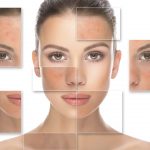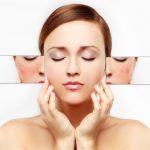Rosacea Basics
Rosacea is a common skin condition which effects many however, very little is known about this  irritating and embarrassing issue. Rosacea is often misdiagnosed as acne, allergic reactions or even skin blushing. Rosacea is a chronic condition that usually occurs in women over the age of 30. Rosacea can not only affect the face, it can also affect the back, neck and chest areas. Even though there is very little known about the causes of Rosacea, there have been a number of triggers which have been identified as exacerbating this condition these include;
irritating and embarrassing issue. Rosacea is often misdiagnosed as acne, allergic reactions or even skin blushing. Rosacea is a chronic condition that usually occurs in women over the age of 30. Rosacea can not only affect the face, it can also affect the back, neck and chest areas. Even though there is very little known about the causes of Rosacea, there have been a number of triggers which have been identified as exacerbating this condition these include;
– Continuous exposure to sunlight.
– Hot or cold water
– Strenuous exercise
– Stress
– Certain foods
– Alcohol and caffeine
– Weather changes
Rosacea begins with a small group of veins becoming visible in the centre of your face, which grow outwards over time.
Signs and Symptoms of Rosacea;
Signs and symptoms of rosacea can vary among sufferers however the most common include;
– Blushing
– Small spider veins becoming apparent on the face, neck, shoulders and back.
– Constant redness of the cheeks, shoulders, neck and back.
– Small spots occurring in the usual areas.
– Sensitivity to certain cosmetic products and skin care creams.
4 Main Types of Rosacea
There are 4 main types of rosacea that can affect any one of us, these include;
– Ocular Rosacea – this is where the skin around the eyes and eyelids can become red and swollen. Ocular rosacea can also lead to dry eyes, constant tearing and in some bad cases, regular infections. Up to 50% of rosacea sufferers, suffer with ocular rosacea. Eyes can become light sensitive and some very severe cases can lead to eye damage.
– Papulopustular Rosacea – this is where the skin becomes covered with small bumps, spots and pustules. Often mistaken for acne, this type of rosacea can be extremely irritating.
– Erthematotelangiectatic Rosacea – this type of rosacea causes severe flushing and constant redness. The appearance of blood vessels become more apparent and can affect your appearance and the way you feel about yourself.
– Phymatous Rosacea – This kind of rosacea can be extremely uncomfortable and can cause thickening of the skin and enlargement of the facial tissue.
What Can I Do To Help My Rosacea?
Unfortunately there is no cure for rosacea, however once you have identified what can make your rosa cea worse, then you will know how to treat it. Every individual who suffers with rosacea will have different symptoms and because of this, each course of treatment has to be tailored to your specific needs. Even though there is no cure, not to worry ladies there are plenty of ways of help reduce the appearance of rosacea.
cea worse, then you will know how to treat it. Every individual who suffers with rosacea will have different symptoms and because of this, each course of treatment has to be tailored to your specific needs. Even though there is no cure, not to worry ladies there are plenty of ways of help reduce the appearance of rosacea.
If you find that eating certain foods causes your rosacea to flare up, then keeping a diary of all that you consume throughout the day may help you to become aware of the food that is causing your rosacea, so that you know what to stay away from. Keeping away from chemicals and harsh cosmetic products is also another way to prevent the rosacea from flaring up.
One way to help reduce the effects of rosacea is by having the Nuriss ‘Rosacea Rescue Facial Treatment’ This amazing treatment uses pulses of laser light to help to stimulate the natural healing process of the skin.

